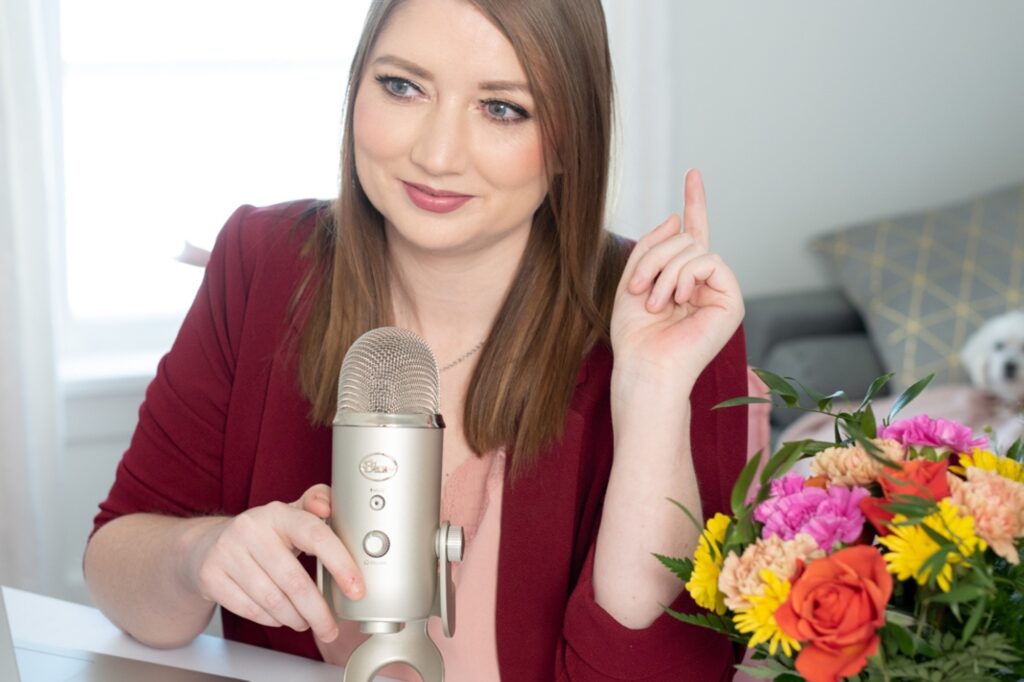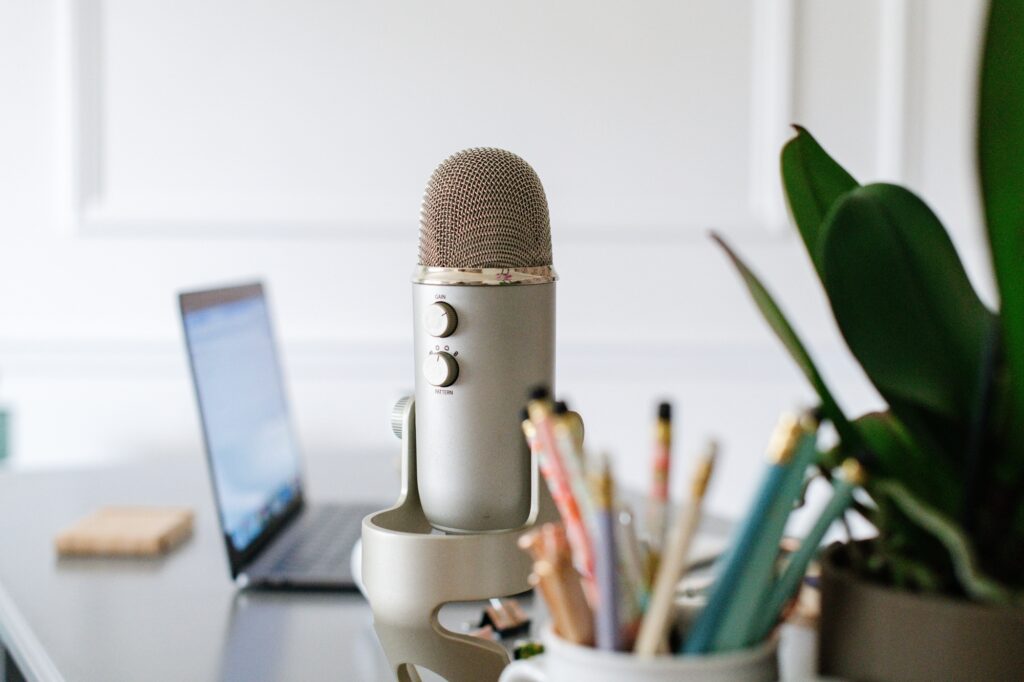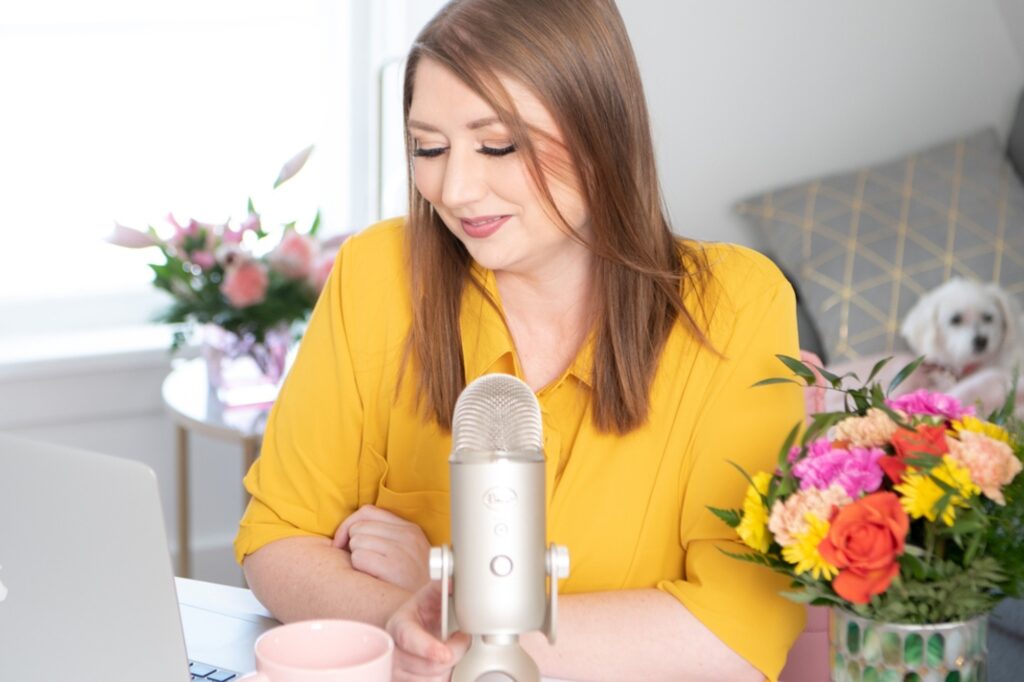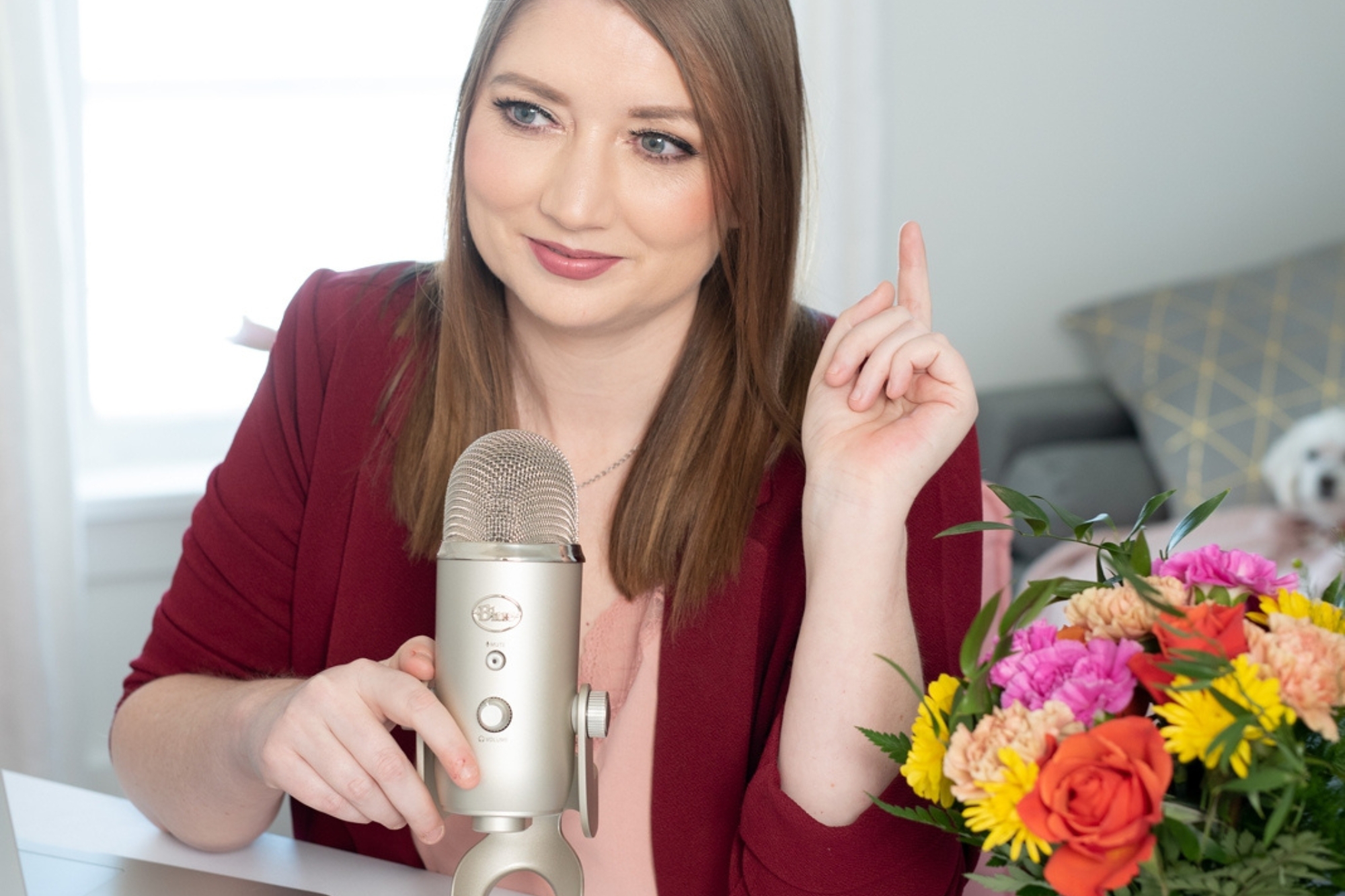Struggling to get the results you want from your emails?
Discover 15 simple yet powerful ways to elevate your email marketing and start seeing real engagement!
Grab your freebie!
Blog Categories
Helping small business owners, virtual assistants, and creative entrepreneurs grow their business.
Hi, I'm Tara! I'm a multi-passionate business and marketing coach.
learn more + get a copy:
Last Updated on October 13, 2025 by Tara Reid
Hey there, fellow podcasters! Ever felt like you’re pouring your heart and soul into your podcast, only to have it vanish into the digital ether after release? We’ve all been there, and that’s why we’re diving into the game-changing world of content repurposing.
Disclaimer: I earn from qualifying purchases. Some of the links on my website are affiliate links, which means, at no additional cost to you, I will earn a small commission if you click through and make a purchase.
Learning how to repurpose podcast content isn’t just a neat trick – it’s a surefire way to squeeze every ounce of value from your hard work and reach a wider audience.
In this article, we’re going to walk you through some killer strategies to give your podcast content a new lease on life. We’ll explore how to turn your audio gold into written treasures, create eye-catching videos, and leverage social media to spread your message far and wide.
Plus, we’ll chat about some nifty AI tools that can make the whole process a breeze. So, buckle up and get ready to supercharge your podcast’s impact – it’s time to make your content work harder for you!
- What is Podcast Content Repurposing?
- The Benefits of Repurposing Your Podcast Content
- Transcribe Your Podcast Episodes
- How to Repurpose Podcast Content: Create Video Content
- How to Repurpose Podcast Content: Written Content
- How to Repurpose Podcast Content: Leverage Social Media Platforms
- Measure and Optimize Your Repurposing Efforts
- Final Thoughts
What is Podcast Content Repurposing?
Let’s dive into the exciting world of content repurposing. It’s a game-changer that can take your podcast to new heights. So, what’s it all about?
Definition of Podcast Content Repurposing
Content repurposing is like giving your podcast a makeover. We’re talking about taking your existing audio gold and transforming it into different formats.
It’s not just about reaching a wider audience; it’s about catering to different learning styles and platforms.
Think of it as breathing new life into your content and putting it in the hands of people who might have never found you otherwise.

The Benefits of Repurposing Your Podcast Content
Now, you might be wondering, “Why should I bother repurposing my podcast content?” Well, let me tell you, the benefits are pretty sweet:
1. Reach New Audiences: Not everyone’s a podcast listener, right? By repurposing, we’re getting our message out to folks who prefer other types of content. It’s like casting a wider net!
2. Build Brand Awareness: The more we talk about something, the more we become known for it. It’s a great way to show off our expertise and build credibility in our field.
3. The ‘Rule of 7’: Ever heard of this marketing gem? It suggests people need to see something seven times before they take action. Repurposing helps us hit that magic number!
4. Boost SEO: A podcast with a strong SEO game performs way better. By creating show notes, transcriptions, and other repurposed content, we’re building a resource hub that search engines love.
5. Get More Mileage: We’re already putting in the hard work to create our podcast. Why not milk it for all it’s worth? Repurposing helps us squeeze every drop of value from our content.
6. Save Time and Money: If we’re on a tight budget (and who isn’t?), repurposing is a lifesaver. We’re leveraging what we already have, making our content more accessible without breaking the bank.
Examples
So, what does content repurposing look like in practice? Here are some cool ways we can remix our podcast content:
- Turn episodes into blog posts or articles
- Create short video clips or audiograms for social media
- Design infographics highlighting key points
- Develop a series of social media posts
- Compile multiple episodes into an ebook
- Create a YouTube video using podcast audio and stock footage
- Take screenshots of listener reviews and share them as image posts
Remember, content repurposing isn’t just about making things shorter. We can also go the other way, like stitching together short clips to create a full-length podcast episode. The possibilities are endless!
By embracing content repurposing, we’re not just expanding our reach – we’re future-proofing our content. If one platform goes down, we’ve got backups in different formats. It’s all about options, folks, and the more we have, the better positioned we are to keep our message alive and kicking.

Transcribe Your Podcast Episodes
Alright, let’s dive into the world of podcast transcription! It’s a game-changer, folks, and I’m here to tell you why it’s worth your time and effort.
Tools for transcription
First things first, let’s talk tools. We’ve got a bunch of options to make our lives easier:
AI-powered services: These are the new kids on the block, and they’re pretty impressive. Tools like Castmagic, Podium, Podsqueeze, and Swell AI can automatically transcribe your episodes, generate show notes, and even suggest titles. Talk about a time-saver!
Automated transcription services: These tech-driven algorithms are quick and budget-friendly. They’re not perfect, with about 85% accuracy, but they’re a great starting point.
Professional transcription services: If you’re after top-notch accuracy, human transcriptionists are your best bet. They’re pros at handling complex audio, multiple speakers, and tricky accents.
Descript: This one’s a bit different. While it doesn’t generate show notes or titles, it’s lightning-fast at producing accurate transcripts.
SEO benefits
Now, let’s chat about why transcribing your podcast is a smart move for SEO:
Search engine visibility: Search engines can’t listen to our audio, but they love text. By transcribing our episodes, we’re giving them something to sink their teeth into.
Keyword opportunities: Every time we mention our podcast’s subject in the audio, it becomes a potential keyword in the transcript. More keywords mean more chances to be found!
Natural language processing: Search engines are smart cookies. They understand context, even without exact keyword matches. Transcripts provide more context, making our content more relevant to various search terms.
Backlink potential: Other sites can easily find and reference specific parts of our episodes, increasing the chances of getting those valuable backlinks.
Expanded ranking potential: Instead of ranking for just one main idea, we open up opportunities to rank for multiple topics covered in our episodes.

Accessibility
Last but definitely not least, let’s talk about making our content accessible to everyone:
Hearing impaired audience: According to the World Health Organization, over 466 million people worldwide have disabling hearing loss. By providing transcripts, we’re opening our content to this massive audience.
Language barriers: For non-native speakers, reading along can be a huge help in understanding our content, especially when dealing with accents or idiomatic expressions.
Learning preferences: Some folks simply prefer reading to listening. Transcripts cater to different learning styles and preferences.
Situational limitations: There are times when people can’t listen to audio (like in a quiet office or on a noisy train). Transcripts allow them to engage with our content regardless of their environment.
By transcribing our podcasts, we’re not just ticking boxes – we’re genuinely expanding our reach and making our content more inclusive. It’s a win-win situation that benefits both us and our audience. So, let’s get transcribing and watch our podcast’s impact grow!
How to Repurpose Podcast Content: Create Video Content
Let’s dive into the exciting world of video content creation for our podcasts!
We’ve got a few awesome ways to transform our audio gold into eye-catching visuals that’ll have our audience hooked.
Full episode videos
First up, let’s talk about full episode videos. YouTube has made it super easy for us to publish video podcasts.
Short clips
Now, let’s chat about short clips. These are perfect for social media and can really help us boost engagement. Here’s how we can create them:
We can use AI-powered tools like OpusClip to automatically generate captivating video clips from our episodes.
These tools are great for highlighting key moments without needing pro-level editing skills.
Short clips are super shareable and can help us attract new listeners across different platforms.
Remember, we want to keep these clips short and sweet – just enough to pique interest and make people want to hear more!
Audiograms
Last but definitely not least, let’s talk audiograms. These are like the cool cousin of short clips, and they’re amazing for social media promotion. Here’s what we need to know:
Audiograms are short audio snippets (usually around 30 seconds) with a waveform visualization and subtitles, all wrapped up in a video format.
To create one, we just need a short audio clip and an audiogram generator tool like Headliner or Wavve.
Some best practices for creating killer audiograms:
- Choose a visually appealing waveform that fits our brand
- Use eye-catching visuals related to our episode topic
- Always add subtitles (remember, most people scroll with sound off!)
- Include our podcast logo and episode title
- Keep the audio clip short and attention-grabbing
There are tons of great tools out there for creating audiograms. Some podcast hosts even have built-in audiogram functionality, which is super convenient.
By using these different types of video content, we’re not just repurposing our podcast – we’re giving it new life across multiple platforms. It’s all about making our content work harder for us and reaching as many potential listeners as possible. So let’s get creative and start turning those audio gems into visual gold!

How to Repurpose Podcast Content: Written Content
Let’s chat about turning our audio gold into written treasures. It’s not just about reaching a wider audience – it’s about maximizing the value of every word we speak. So, let’s dive in and explore some awesome ways to repurpose our podcast content into written form.
Blog posts
First up, let’s talk blog posts. These are SEO powerhouses, folks! We can easily control things like length, keywords, paragraphs, and headings to match Google’s specifications. It’s as simple as jumping into a Word document and making tweaks.
Here’s why blog posts are so great:
- They can drive tons of traffic to our site if they rank well on search engine results pages (SERPs).
- They’re evergreen content, meaning they’ll continue to bring in traffic over time.
- We can create multiple blog posts from a single podcast episode, covering more search terms on Google.
But remember, we’re not just copying and pasting our show notes here. We want to expand on the topics we discussed in our episode, providing extra value to our readers. And don’t worry about including the entire interview – condense it down to 40-60% of the content, keeping quotes to a minimum.
Pro tip: Add some visuals! Over 90% of marketers use visual content in more than half of their articles. It makes our posts more engaging and shareable.
Social media posts
Now, let’s talk social media. With over 5 billion people worldwide using social platforms, the potential reach for our podcast is enormous! We can repurpose our content into bite-sized pieces perfect for social sharing.
Here are some ideas:
- Create audiograms: These are short audio snippets with a waveform visualization and subtitles.
- Make quote visuals: These are eye-catching and perfect for platforms like Instagram.
- Record short teaser videos: If we video record our podcast, we can edit it into brief teasers.
When writing our social copy, we need to give people a reason to hit play. Start with an attention-grabbing opening line, provide context, highlight key talking points, and include a clear call to action.
eBooks
Last but not least, let’s chat about eBooks. This is a fantastic way to dive deeper into our content and create a valuable lead generation tool. Plus, it can help position us as experts in our field.
To create an eBook:
- Review our podcast episodes and identify common themes.
- Transcribe relevant episodes (consider using a professional service for accuracy).
- Edit the content to maintain our podcast’s tone and vibe.
- Format the eBook to reflect our podcast’s style.
Remember, an eBook isn’t just a transcript – it’s an opportunity to provide deeper insights and create an additional revenue stream.
By repurposing our podcast content into these written formats, we’re not just reaching a wider audience – we’re creating a content ecosystem that supports and amplifies our podcast. So let’s get writing and watch our podcast’s impact grow!
How to Repurpose Podcast Content: Leverage Social Media Platforms
Let’s chat about how we can make the most of social media to get our awesome content out there. We’ve got a goldmine of platforms at our fingertips, and I’m here to show you how to use them like a pro.
While I’m no longer on Instagram myself… with a whopping 2.4 billion monthly users, it’s a hotspot for content creators. The best part? 97.92% of these users are engaging with reels. That’s where our podcast clips come in handy!
Here’s how we can rock it:
Reels: Share short, snappy clips from our episodes.
Audiograms: Got an audio-only podcast? No worries! We can create audiograms with custom cover images and sound visualizer animations. They’re perfect for visual platforms like Instagram.
Quote Images: Remember, 66,000 pictures are shared on Instagram every minute. Let’s join the party with cool backgrounds and inspirational quotes from our episodes.
Twitter / X
X (I hate calling it that) is a whole different ball game, but it’s got some serious potential for us podcasters. Here’s the deal:
- Threads: We can turn our episodes into tweet threads. It’s all about picking out the key points and writing clear, concise messages.
- Live Streams: Use Twitter’s live stream feature to elaborate on our content or chat with guests in a podcast format.
- Spaces: This audio feature lets us discuss our topics publicly with our audience. It’s like hosting a live mini-podcast!
Now, don’t sleep on LinkedIn, folks! It’s a powerhouse for professional networking and can be a game-changer for our podcasts. Here’s how we can leverage it:
- Optimize Our Profiles: Turn on Creator Mode, highlight our podcast in the About section, and include a link to our show.
- Craft Engaging Posts: Instead of just dropping a link, let’s start conversations about our episode topics.
- LinkedIn Newsletter: This is gold! We can recap our latest episodes and even embed podcast links from platforms like Spotify and Soundcloud.
TikTok
Last but not least, let’s talk TikTok. It’s not just for dance challenges, my friends. We can use it to brainstorm ideas and promote our shows (if you’re into video marketing):
- Topic Ideas: Use TikTok to find trending topics or ask your audience for suggestions.
- Behind-the-Scenes: Share snippets of your recording process or how you come up with podcast topics.
- Teasers: Create short, catchy videos to promote upcoming episodes.
Remember, it’s all about adapting our content to fit each platform’s unique style. Let’s get creative, have fun, and watch our podcast audience grow across these social media channels!

Measure and Optimize Your Repurposing Efforts
Let’s chat about how we can measure and optimize our content repurposing efforts. So, let’s dive in and see how we can make our repurposing game stronger!
Analytics tools
First things first, we need the right tools to track our progress. There are some fantastic options out there, both free and paid, that can give us the insights we need. Here are a few to consider:
Blubrry: This one’s great if you’re on a budget. It offers advanced listener stats for free, perfect for deep-diving into your audience’s behavior.
Chartable: Another free option that helps us track listener growth and see how effective our marketing efforts are.
Podbean: If you want to understand your audience demographics and content performance without spending a dime, Podbean’s got you covered.
Backtracks: For those of us ready to invest a bit more, Backtracks offers advanced tracking technology at $39/month.
Transistor: Starting at $19/month, this tool provides advanced analytics for tracking downloads and engagement.
CoHost: This one’s a game-changer, folks! It offers features like Advanced Audience Demographics and B2B Analytics, helping us verify if we’re reaching our target audience.
Key metrics to track
Now that we’ve got our tools, what exactly should we be measuring? Here are some key metrics to keep an eye on:
- Website traffic: This is crucial if we’re using our podcast to drive visitors to our site. Google Analytics can tell us which content is bringing in the most traffic.
- Email subscribers: If growing our email list is a goal, we need to track how our repurposed content is influencing sign-ups.
- Podcast downloads: Compare your download numbers before and after repurposing to see if it’s making a difference.
- Social media engagement: Look at metrics like followers, likes, shares, and comments to gauge how well your repurposed content is performing on social platforms.
- Click-through rate (CTR): This tells us how many people are taking action after engaging with our content.
- Average engagement time: In Google Analytics 4, this metric shows us how long people are spending on our website or reading our blog posts.
- Keyword rankings: If SEO is important to us, we’ll want to track how our repurposed content is affecting our position in search results.
Remember, we don’t need to track everything under the sun. Let’s focus on the metrics that align with our goals. Whether it’s driving more traffic to our website, boosting email subscribers, or increasing podcast downloads, our analytics will tell us if our repurposing efforts are paying off.
By keeping a close eye on these metrics and using the right tools, we can continually refine our repurposing strategy. It’s all about understanding what works for our audience and doing more of it. So, let’s get measuring and watch our podcast’s impact grow!
Final Thoughts
Repurposing podcast content is more than just a clever strategy; it’s a game-changing way to maximize your podcast’s reach, save time, and grow your brand. By using AI tools to transcribe, create videos, and automatically generate social media posts, you’re not only boosting engagement but also making your content work for you long after the episode airs.
Embracing content repurposing means tapping into new audiences and platforms, increasing your visibility, and building a lasting impact. Whether you’re automating workflows or promoting across social media, these strategies can transform how you manage your podcast.
Don’t let your content fade after it’s published — give it the chance to shine in multiple formats!
Tara Reid is a multi-passionate business and marketing strategist for introverted entrepreneurs who want to grow without relying on hustle culture or social media. With 18+ years of online business experience, she helps course creators, service providers, and digital product sellers build sustainable businesses through evergreen marketing, blogging, SEO, Pinterest, and email.
As the founder of the Introvertpreneur Club, Tara’s mission is to show heart-centered entrepreneurs that you don’t have to be loud to be successful. You just need the right strategies that fit your personality.
When she’s not supporting clients or creating new resources, you can find her at home in Canada with her three rescue dogs, a cup of coffee in hand, dreaming up her next project.
The Introvertpreneur Podcast
listen in to the top rated business podcast that is designed for introverted entrepreneurs who want to grow + scale in a more sustainable and fun way!
Top rated podcast
This one's on me. Complimentary free stuff coming right up.
leaving so soon?
Look behind the curtain and see exactly what I do every week, month, and quarter, to market my business without social media (in under 5 hours per week)!
The Quiet Marketing Playbook
Take this free quiz and learn what your superpower is as an entrepreneur. You'll also get a curated list of my best resources and tips for using your superpower to your advantage!
What's your Introverted Superpower?
Best Free Resources:
dig into 'em now!
A business strategist and marketing coach who focuses on helping course creators, coaches, and service providers, build sustainable businesses without social media.
